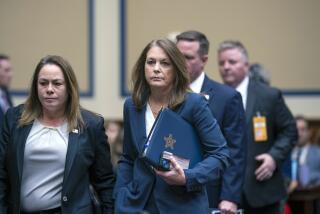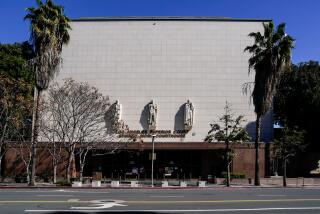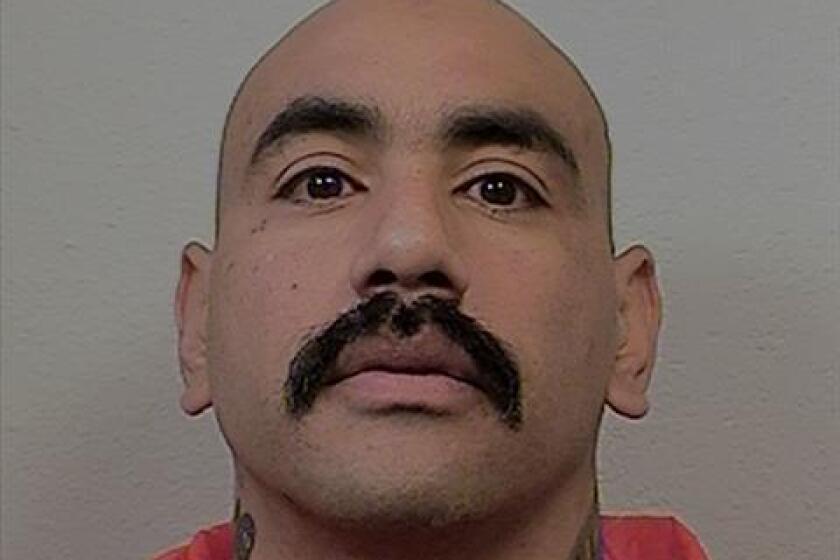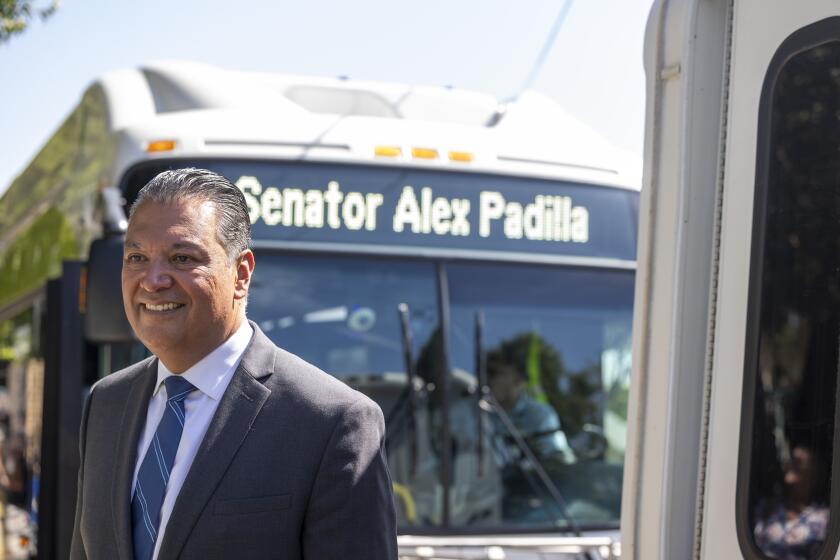Los Pobladores 200 to Walk the Path That Settlers Took
Lillian Robles sees the faces of her ancestors as she looks at new arrivals from Mexico and Central America. They are tired, poor, unsure of what the future holds for them, but at the same time they are filled with hope.
Robles, who traces her family tree back to the original settlers of Los Angeles, plans next week to walk the same last leg her ancestors took from the Mission San Gabriel to what today is commonly known as the Olvera Street plaza. There, El Pueblo de la Reina de Los Angeles Sobre el Rio de La Porciuncula was founded 210 years ago on Sept. 4, 1781.
On Monday, Sept. 2, up to 100 other direct descendants--members of Los Pobladores 200--and others will join in the annual commemorative trek that was started when Los Angeles celebrated its 200th birthday in 1981.
“I am descended from Jose Antonio Navarro, who was a tailor, and Roque (Jacinto de) Cota, a soldier,” Robles, 74, says proudly. “What’s so amazing is after 200 years, we can still hang onto our culture.”
On the walls of her Long Beach home are photographs of her mother’s family and a wedding portrait of her mother, a Juaneno Indian, and her father, a descendant of the Pobladores. Recently, she has taken a renewed interest in her Juaneno blood and makes it a point to remember that the San Juan Capistrano-area tribe and others were in Southern California long before the Pobladores.
Robles started her travels into history after her mother died. She found baptism and marriage certificates in churches and, aided by her knowledge of genealogy, traced her roots to the L.A. settlers.
Two volumes of the family lines written by genealogist Marie Northrop name the children, grandchildren, great-grandchildren and other descendants of the 44 settlers, who traveled from Sonora. She also records the families of the four soldiers who had been stationed at the San Gabriel Mission and went along on that last leg of the trip.
The settlers, who came from what was New Spain, now Mexico, were ordered by King Carlos III to settle the land, plant orchards and fields, raise cattle and supply the missions and fortresses that already had been established. They came with their children, some cattle, the clothes on their backs and not much else besides the promise of land when they arrived. Among the settlers were mestizos, blacks, mulattos, Indians and two men who were born in Spain, said Jean Bruce Poole, curator of El Pueblo de Los Angeles Historic Monument.
The 11 families are listed on a plaque at El Pueblo de Los Angeles Historic Monument’s plaza, which is adjacent to Olvera Street.
What the Pobladores 200 have found is that they are all related in some fashion, said Northrop, whose husband, Joe Murillo Northrop, is a descendant. In fact, all the known Pobladores 200 have settlers Juan Diego Verdugo, Jose Maria Claudio Lopez and Cota in their family trees, Marie Northrop said.
Her specialty over the years has been those early settler families in California. She has written the books and delivered a paper on the topic at an international conference in France. She and her husband are credited with bringing the families together in 1981 and forming Los Pobladores 200.
“Back in 1979, we were wondering what was going to be happening with the Los Angeles bicentennial,” she said, “so I sent out notices to newspapers, magazines, California historical societies, wherever I could, asking for descendants of these people, and it got around.”
Finally, in October, 1981, 250 descendants gathered at Exposition Park, where they set out plaques marking the group’s name.
A month earlier, history buff T. Willard Hunter had made the nine-mile walk from the Mission San Gabriel to El Pueblo Historic Monument to commemorate the city’s bicentennial. Afterward, he heard of Los Pobladores 200 and invited them to join him the next year.
“I thought it would be interesting to develop a sense of history,” Hunter said. “We started slow, with 10 or 20 people, then worked up to 101. So they began to go forward with it and it’s been an annual event.”
A small portion of the group meets monthly, but the walk and commemorative ceremonies are considered the year’s highlight.
Still, there are families who either are not aware of their connections to the Pobladores, do not care or deny it, Northrop says, because of mixed feeling about the settlers or their descendants. For others, the knowledge has helped them discover themselves and claim their rightful part in California’s history.
Northrop tells the story of a woman who works as a janitor in an elementary school in the San Fernando Valley who discovered her ties to the Pobladores with the help of a teacher. “The woman was so ecstatic, so excited, and she had been so quiet before. She changed.” Now, that woman talks to classes, telling the young students of her history.
“It’s very personal,” Northrop says. “That is why I know it can make such a difference with people if they get into their own family history. It can develop a sense of pride in their own families, their heritage. Then they can feel a sense of duty to their (ancestors).”
The descendants call her from as far away as Tennessee, Alaska and Hawaii, but most are scattered throughout Southern California.
For Robles, who served as the organization’s second president, the connection has become an integral part of her family as she passes the knowledge and pride to her children and grandchildren.
“We have to realize that we have contributed and our culture is good. It gives you a sense of awareness that our roots go very, very deep.” Of the original Pobladores, she says, “I think they would be proud of us that we’re still clinging to our culture. We’re all cousins.”
The nine-mile walk on Sept. 2 begins at 6 a.m. at San Gabriel Mission. Anyone may join participants from the Pobladores 200. The group is expected to arrive at El Pueblo plaza at 9:30 a.m. and will be greeted with a ceremony and entertainment. Brunch is available at $7 but reservations must be made by calling (213) 475-6176. For information, call (818) 792-6463.
More to Read
Sign up for Essential California
The most important California stories and recommendations in your inbox every morning.
You may occasionally receive promotional content from the Los Angeles Times.






